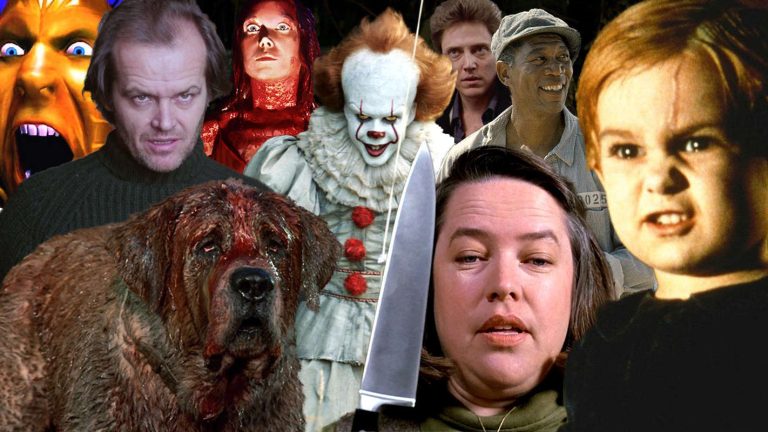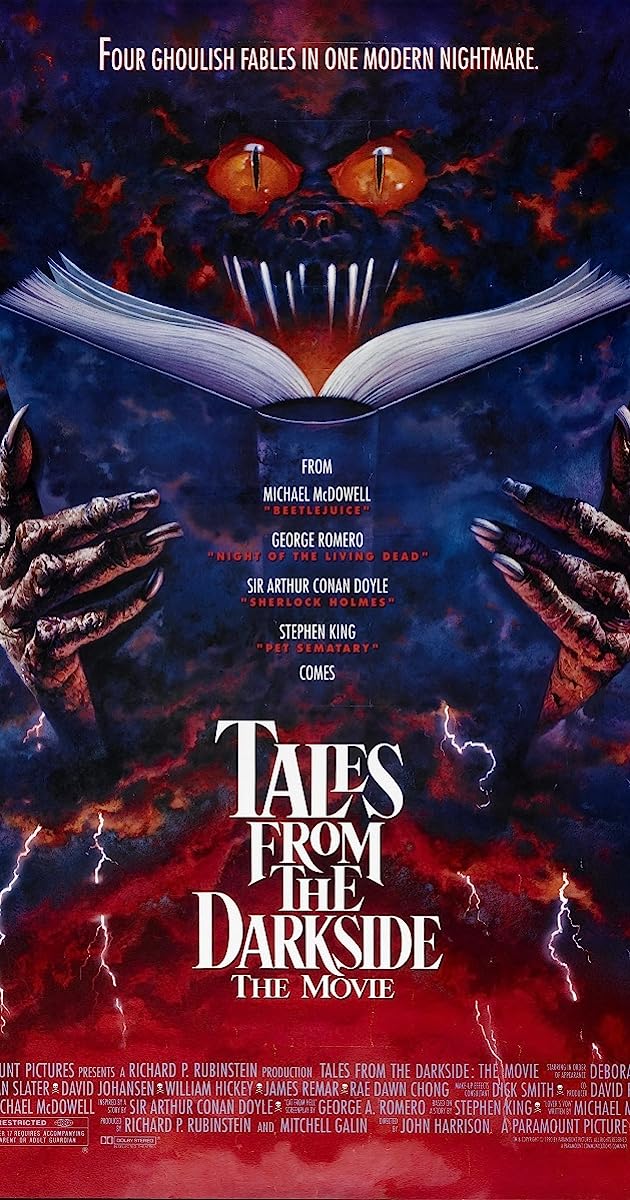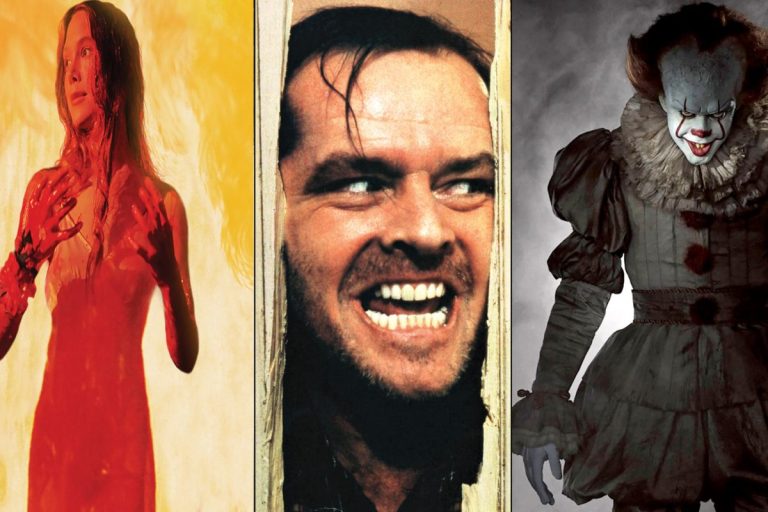The Sonic Landscape Of Stephen King Movies
Welcome to the sonic world of Stephen King movies, where sound becomes a character in its own right. From the bone-chilling whispers to the heart-pounding scores, the auditory landscape of these films adds an extra layer of intensity and immersion. In this article, we’ll delve into the power of sound in Stephen King’s cinematic adaptations and explore how it heightens the overall experience for viewers. So, grab your popcorn, dim the lights, and prepare to be captivated by the sonic wonders of the King’s realm.
When it comes to Stephen King movies, the sonic landscape plays a crucial role in setting the tone and enhancing the storytelling. It’s not just about the scares and the screams; it’s about the subtleties, the eerie ambience, and the haunting melodies that linger long after the credits roll. From the iconic theme of “The Shining” to the spine-tingling sound effects of “IT,” each film boasts a unique auditory fingerprint that amplifies the emotions and keeps audiences on the edge of their seats. So, join us as we embark on a journey through the auditory masterpieces of Stephen King adaptations, and discover the magic that lies within the realm of sound.

The Sonic Landscape of Stephen King Movies
Stephen King is widely regarded as one of the greatest storytellers of our time, known for his ability to create vivid and chilling narratives that captivate readers and keep them on the edge of their seats. But beyond the gripping plots and memorable characters, there is another element that adds an extra layer of depth to King’s stories—the sonic landscape. In this article, we will explore the role of sound and music in Stephen King movies, and how they contribute to the overall experience.
The Power of Sound in Stephen King Movies
Sound is a powerful tool in film, capable of evoking emotions, building tension, and creating a sense of atmosphere. In Stephen King movies, sound is used to heighten the suspense and immerse the audience in the story. From the eerie whispers in “The Shining” to the haunting lullaby in “Pet Sematary,” the soundscape in these films plays a crucial role in setting the tone and enhancing the overall viewing experience.
One of the key aspects of sound in Stephen King movies is the use of ambient noise. Whether it’s the creaking floorboards in a haunted house or the howling wind in a desolate landscape, these subtle sounds create a sense of unease and uneasiness, adding to the suspense and making the audience feel on edge. It’s these small details that make the world of Stephen King come alive and draw viewers into his twisted and terrifying universe.
The Role of Music in Stephen King Movies
Music is another essential component of the sonic landscape in Stephen King movies. The right soundtrack can elevate a scene, intensify emotions, and leave a lasting impression on the audience. In many of King’s adaptations, iconic scores have become synonymous with the films themselves, becoming instantly recognizable and forever etched in the minds of viewers.
Take, for example, the chilling piano melody in “It” or the hauntingly beautiful theme in “The Dark Tower.” These musical compositions not only enhance the mood of the scenes but also serve as a narrative device, providing insight into the characters’ emotions and motivations. The right music can make a terrifying scene even more terrifying or evoke a sense of nostalgia and longing, adding depth and complexity to the story.
The Evolution of Sound and Music in Stephen King Movies
Over the years, the sonic landscape in Stephen King movies has evolved and adapted to the changing times. From the minimalist sound design of early adaptations like “Carrie” to the intricate and layered compositions in recent films like “It Chapter Two,” there is a noticeable progression in the way sound and music are utilized to enhance the storytelling.
Advancements in technology have also played a significant role in shaping the sonic landscape of Stephen King movies. With access to a vast array of digital instruments and effects, composers now have more tools at their disposal to create unique and immersive soundscapes. This allows them to push the boundaries of what is possible and experiment with different sonic textures, resulting in a more dynamic and engaging auditory experience for the audience.
In conclusion, the sonic landscape of Stephen King movies is a crucial element that contributes to the overall atmosphere and impact of these films. Through the careful use of sound and music, filmmakers have been able to create a world that is both captivating and terrifying, drawing viewers into the dark and twisted realms of Stephen King’s imagination. So the next time you watch a Stephen King adaptation, pay close attention to the soundscape—it’s an integral part of the storytelling that shouldn’t be overlooked.
Key Takeaways: The Sonic Landscape of Stephen King Movies
- Music plays a crucial role in setting the mood and atmosphere of Stephen King movies.
- Stephen King often uses popular songs to enhance the emotional impact of certain scenes.
- The use of sound effects helps create tension and build suspense in key moments.
- Original scores composed specifically for Stephen King movies add a unique and haunting element to the storytelling.
- The sonic landscape of Stephen King movies is designed to immerse viewers in the world of horror and enhance the overall viewing experience.
Frequently Asked Questions
1. How does the sound design contribute to the overall experience of Stephen King movies?
The sound design in Stephen King movies plays a crucial role in creating a chilling and immersive experience for the viewers. It helps set the tone, enhance suspense, and evoke emotions. From the eerie background music to the spine-tingling sound effects, every element of the sonic landscape is carefully crafted to draw the audience deeper into the story.
Whether it’s the haunting whispers in the dark, the creaking floorboards, or the ominous score, the sound design adds an extra layer of tension and atmosphere to Stephen King’s cinematic world. It heightens the suspense and keeps the audience on the edge of their seats, amplifying the impact of the scares and intensifying the overall viewing experience.
2. How do soundtracks contribute to the storytelling in Stephen King movies?
The soundtracks in Stephen King movies are more than just background music. They are an integral part of the storytelling process, helping to convey emotions, establish the time period, and create a sense of familiarity or foreboding. The carefully selected songs and compositions not only enhance the narrative but also resonate with the audience on a deeper level.
For example, the use of popular songs from a specific era can transport viewers back in time and provide cultural context. On the other hand, original scores composed specifically for the film can create a unique sonic identity for the story. The combination of these elements helps immerse the audience in the world of Stephen King, making the films more relatable and impactful.
3. What are some iconic sound moments in Stephen King movies?
Stephen King movies are known for their memorable sound moments that have become iconic in the horror genre. One such example is the chilling sound of the twins saying “Come play with us” in “The Shining.” This line, accompanied by eerie music, has become synonymous with the film and continues to send shivers down the spine of viewers.
Another notable sound moment is the recurring theme of Pennywise the clown in the “It” movies. The haunting melody, combined with the sound of children singing, creates a sense of unease and captures the essence of the story. These sound moments, among many others, have become part of the collective consciousness of horror movie enthusiasts and contribute to the lasting impact of Stephen King’s film adaptations.
4. How does sound help create suspense in Stephen King movies?
Sound plays a vital role in building suspense in Stephen King movies. It can be used to foreshadow impending danger, heighten tension, and keep the audience on the edge of their seats. The strategic use of silence, sudden bursts of sound, and atmospheric noises all contribute to the sense of unease and anticipation.
For instance, the sound of a distant scream or a door slowly creaking open can create a sense of impending doom. The absence of sound in certain moments can also be incredibly effective, as it allows the audience’s imagination to fill in the gaps, intensifying the fear. By manipulating sound, Stephen King movies masterfully build suspense and keep viewers engaged throughout the storyline.
5. How do sound effects contribute to the horror elements in Stephen King movies?
Sound effects are crucial in enhancing the horror elements in Stephen King movies. From the bone-chilling screeches of monsters to the blood-curdling screams of victims, these effects add a visceral layer of fear to the visuals. They create a sense of realism and make the audience feel like they are right there in the midst of the terrifying events.
Furthermore, sound effects can also be used to emphasize specific moments of horror, such as the sound of a knife piercing flesh or the sound of a door slamming shut. These details heighten the impact of the scares and leave a lasting impression on the audience. Without the carefully crafted sound effects, the horror in Stephen King movies would lose a significant part of its power to shock and terrify.
The 12 Best Stephen King Movies of All Time
Final Thought: The Harmonious Symphony of Stephen King Movies
As we delve into the sonic landscape of Stephen King movies, we are transported into a world where sound becomes a character in itself, heightening the tension and evoking emotions. From the haunting melodies that linger in our minds to the spine-chilling sound effects that send shivers down our spines, the audio elements in these films play a crucial role in creating an immersive and unforgettable viewing experience.
One cannot underestimate the power of a well-crafted soundtrack in enhancing the storytelling of Stephen King’s adaptations. From the iconic theme of “The Shining” that echoes in our nightmares to the eerie nursery rhyme in “It” that sends chills down our spines, these musical choices stay with us long after the credits roll. The careful selection of songs and compositions not only sets the mood but also serves as a narrative device, subtly guiding our emotions and building suspense.
Moreover, the sound effects in Stephen King movies are nothing short of masterful. The creaking of a door, the distant howl of a wolf, or the menacing growl of a creature lurking in the shadows all contribute to the palpable sense of unease that permeates these films. The attention to detail in capturing every ambient noise and atmospheric sound adds an extra layer of realism, making us feel as though we are right there, experiencing the horrors alongside the characters.
In conclusion, the sonic landscape of Stephen King movies is a symphony of suspense, fear, and emotion. The carefully curated soundtrack and meticulously crafted sound effects work in harmony to immerse us in the world of King’s imagination. As we embark on our next Stephen King movie marathon, let us not forget to appreciate the artistry behind the soundscape, for it is these auditory elements that truly elevate these adaptations to another level of terror and brilliance.






